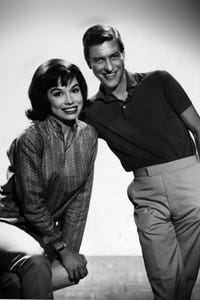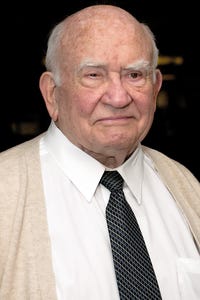X
Join or Sign In
Sign in to customize your TV listings
By joining TV Guide, you agree to our Terms of Use and acknowledge the data practices in our Privacy Policy.
The Mary Tyler Moore Show
Loading. Please wait...

Awards
- 1979 - People's Choice Awards - Favorite Female TV Performer - winner
- 1978 - People's Choice Awards - Favorite Female TV Performer - winner
- 1977 - Emmy - Outstanding Continuing Performance by a Supporting Actress in a Comedy Series - nominated
- 1977 - Emmy - Outstanding Lead Actress in a Comedy Series - nominated
Cast & Crew See All
Latest News See All
Trailers & Videos See All
Popular Shows See all shows
704 Hauser
704 Hauser is an American sitcom that aired on CBS from April to May 1994. A spin-off of All in the Family, the series is built around the concept of a black family, the Cumberbatches, moving into the former Queens home of Archie Bunker years after Bunker had sold the house. The All in the Family character Joey Stivic, Archie's grandson, makes a cameo in the first episode.

Big Wave Dave's
Big Wave Dave's is a sitcom that ran from August 9, 1993 until September 13, 1993. In it, three friends decide to drop everything and run a surf shop in Hawaii. When they arrive, they find out that it's not as easy as they thought. The show was produced by Levine & Isaacs Productions in association with Paramount Television.

Rob
Rob is an American comedy television series that premiered on CBS on January 12, 2012, at 8:30 pm as a midseason replacement for Rules of Engagement, and ended on March 1, 2012. The series stars Rob Schneider alongside Cheech Marin, Claudia Bassols, Diana Maria Riva, Eugenio Derbez, Ricky Rico, and Lupe Ontiveros. The show was produced by Two and a Half Men's The Tannenbaum Company and CBS Television Studios. On May 13, 2012, CBS canceled the series.
Love & Money
In a swanky New York City apartment tower, the earnest young handyman, who lives in the basement, loves the shy heiress who lives in the penthouse. Separating this couple, more than just 20 stories of plush co-ops, is a slew of oddball relatives and millions of dollars in social prestige.
Listen Up
A sports-show host-columnist is admired by his many fans, but struggles at home to win respect from his wife and kids, especially since he uses them as fodder for his pieces. Inspired by Washington Post columnist and ESPN personality Tony Kornheiser.
Shower of Stars
Shower of Stars is an American variety television series broadcast live in the United States from 1954 to 1958 by CBS. The series was broadcast in color which was a departure from the usual programming broadcast by CBS.

